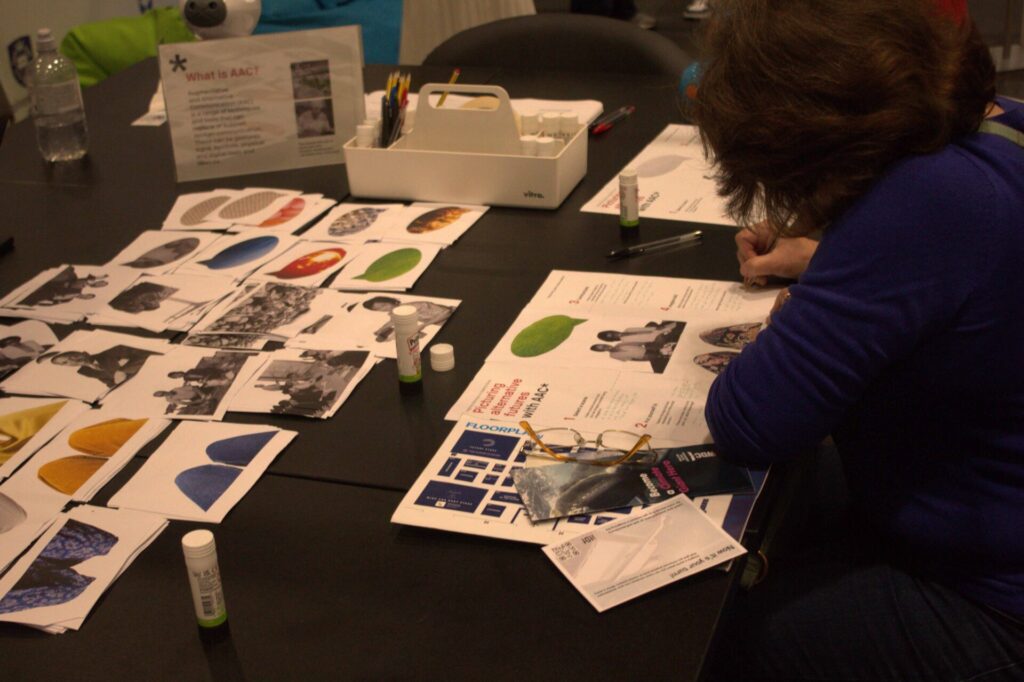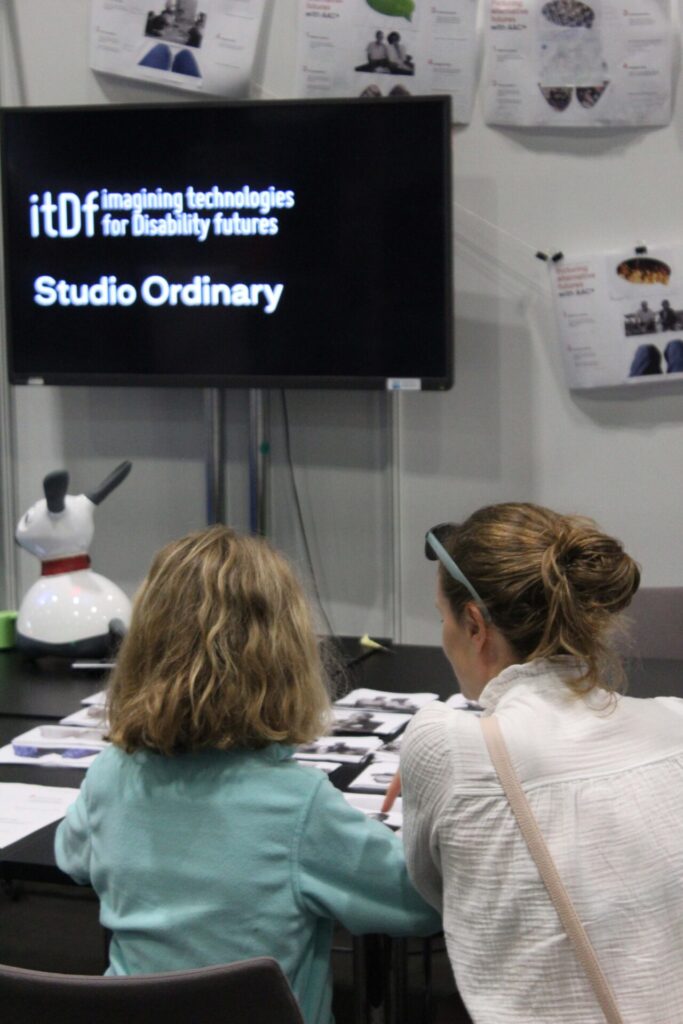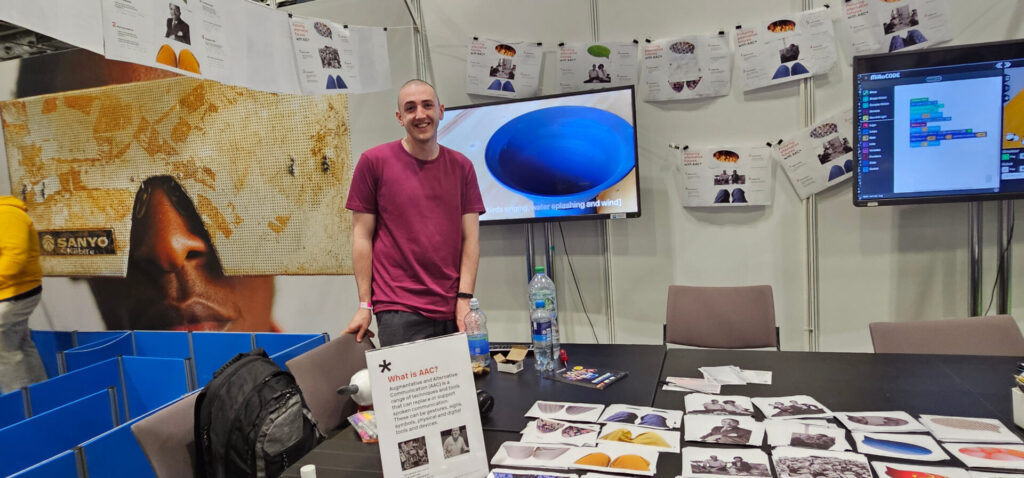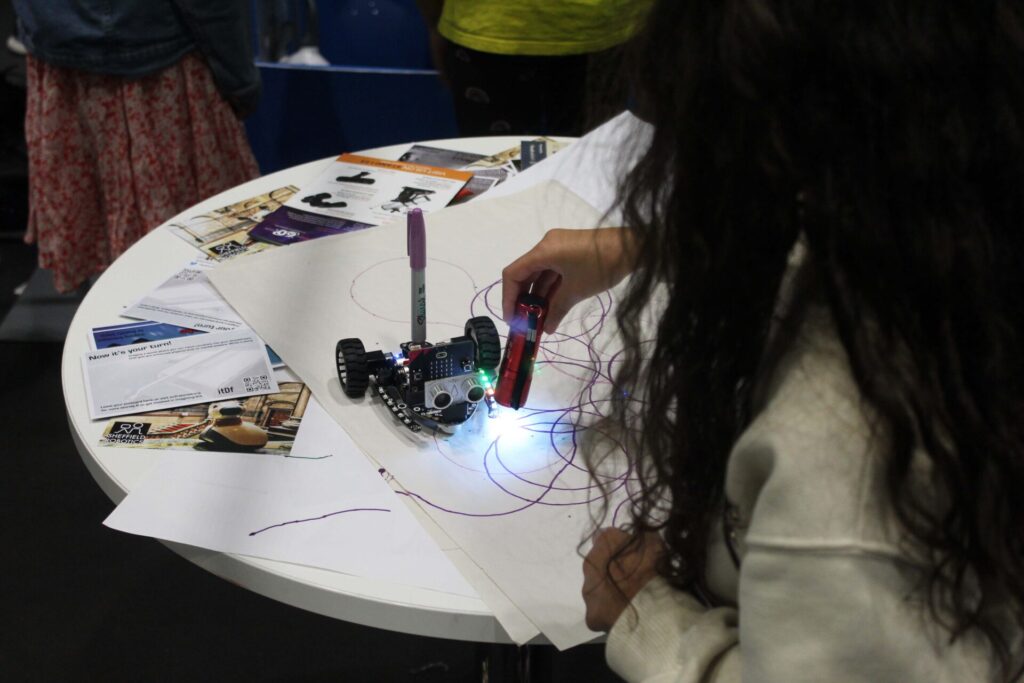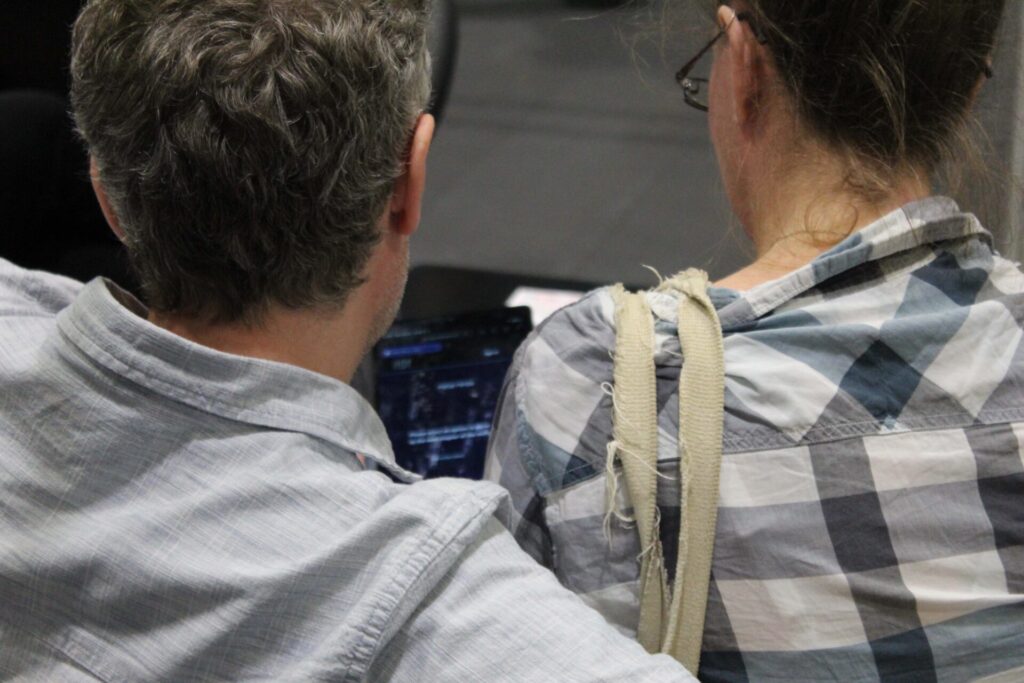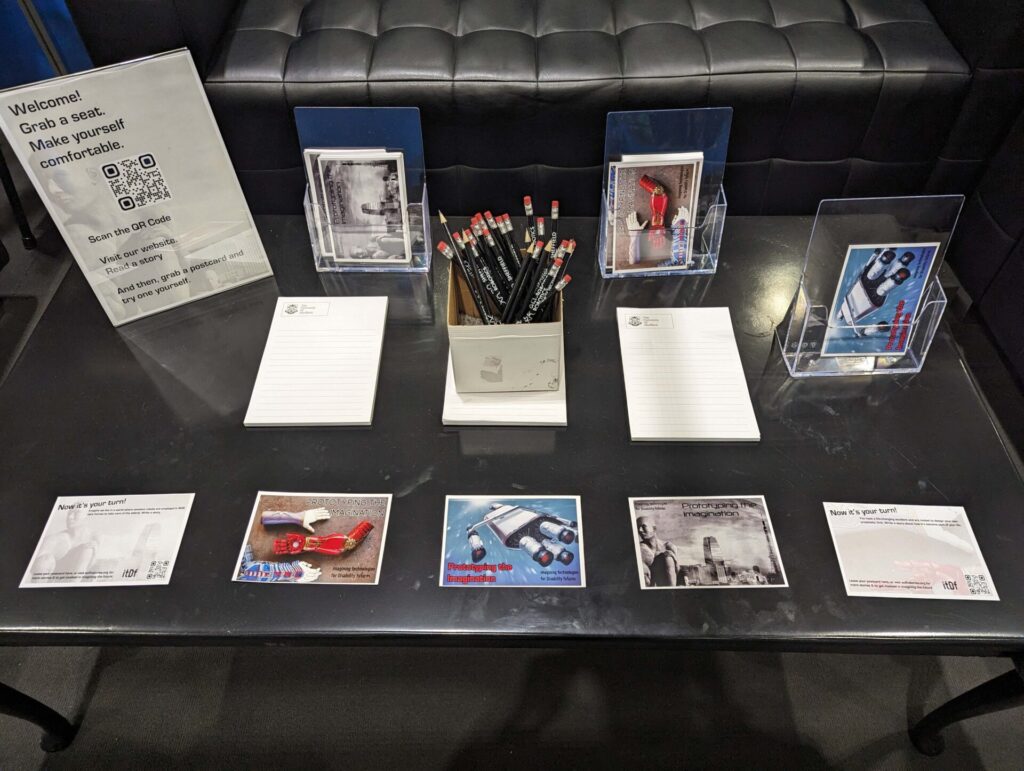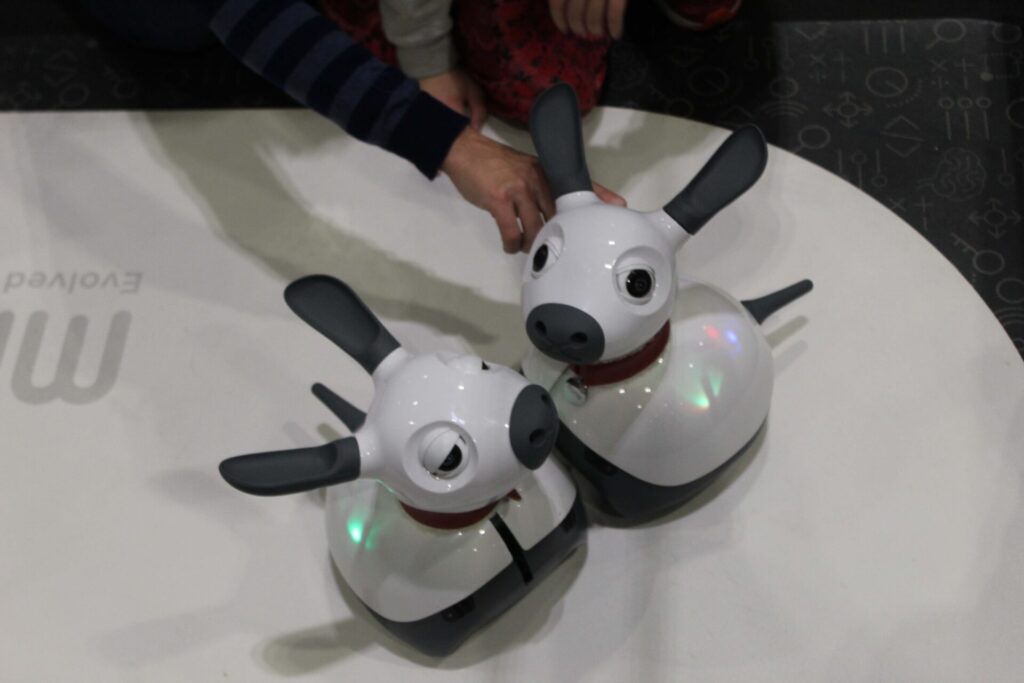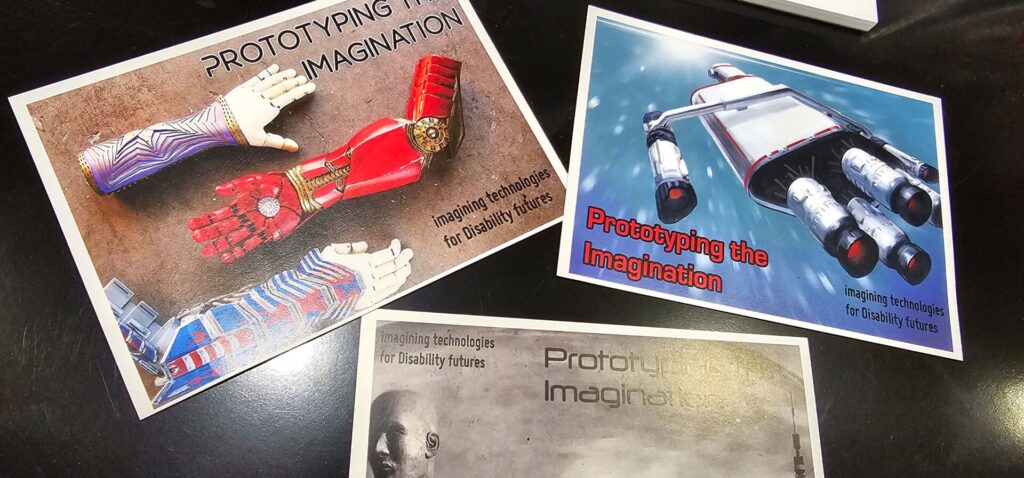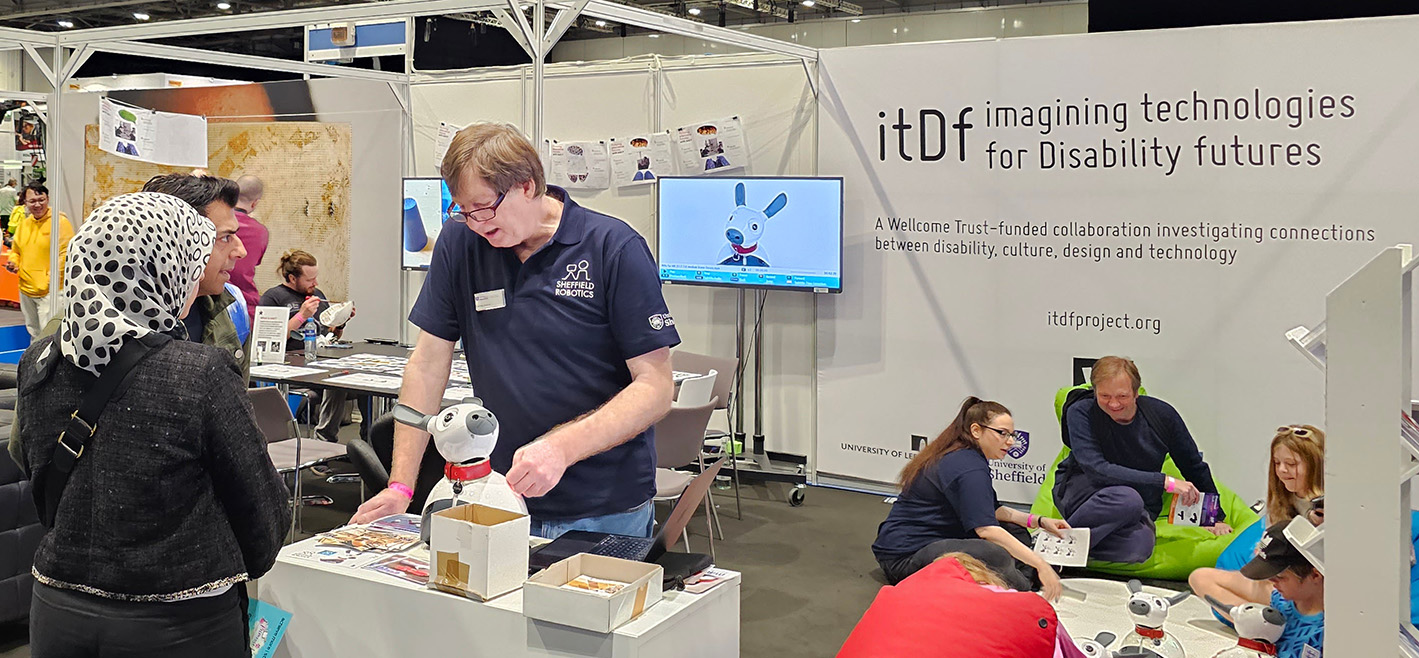New Scientist Live 2023 @ ExCel London, 7 – 9 October, 2023
by Michael Szollosy, Tony Prescott, Chrissie Stimson and Fin Tams-Gray
A team from itDf represented the project at New Scientist Live 2023 at London’s ExCel Centre, on the 7th, 8th and 9th of October, which welcomed over 20,000 visitors over three days of exhibits, 56 talks across 5 stages and featuring 80 exhibitors
The itDf stand – a massive 10 x 6-metre space – included many activities for NSL23 audiences, including:
- The launch of our new science-fiction prototyping project, Prototyping the Imagination (more on this to follow in another post)
- A collage activity, Picturing Alternative Futures With AAC, was designed as a space to reflect and also gather insights on the future of alternative and augmentative communication (ACC). The activity encouraged people to think about not just what alternative and augmented communication might look, sound or feel like, but in what environments or scenes AAC might exist.
- The Robot Maze, where NSL visitors could drive robots around our specially constructed 3-metre square maze.
- A robot petting area, where visitors could relax, sit on our comfy beanbags and enjoy the company of our Miro robots, who behave like autonomous small mammals, interacting with humans and wagging their tails when being stroked.
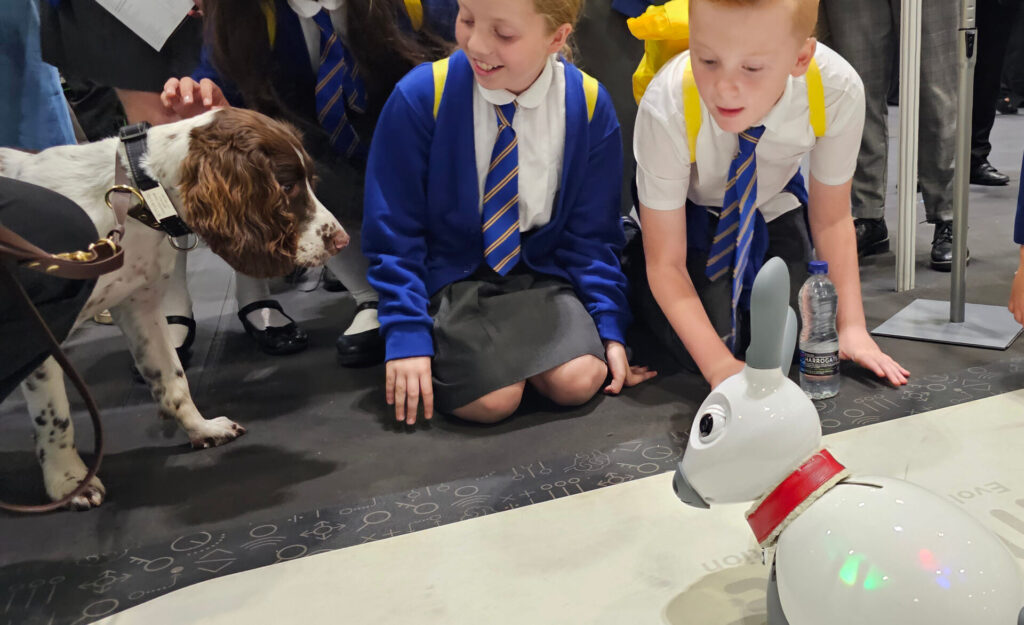
Billed as ‘the world’s greatest festival of ideas and discoveries’, New Scientist Live aims to provide visitors with an incredible weekend of thought-provoking talks, ground-breaking discoveries, interactive experiences, hands-on activities, workshops and performances around all areas of science and technology.
The first two days of the festival (Saturday and Sunday) were for the general public; people of all ages came to hear talks and visit the stands at New Scientist Live. This year, the third day (Monday) was designated as a ‘Schools Day’ and we spoke with some of the thousands of young people who came to NSL about the project, robotics, the imagination, and how they imagine technology playing a role in their future.
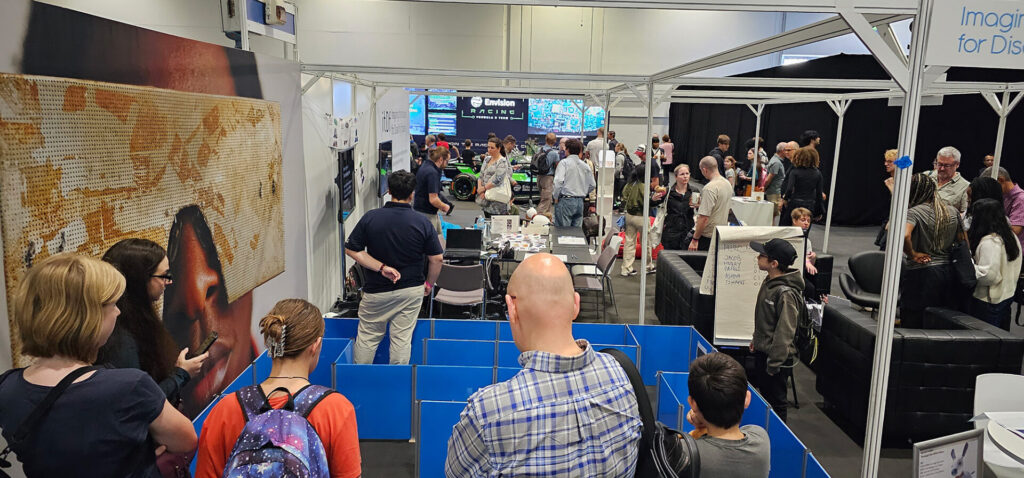
itDf appeared at New Scientist Live this year as part of our public engagement programme. Though we are an academic project, we vigorously agree with and support The Wellcome Trust’s commitment to public engagement, and helping a greater number of people be empowered in thinking about and helping to shape the future and forge new connections between disability, culture, design and technology.
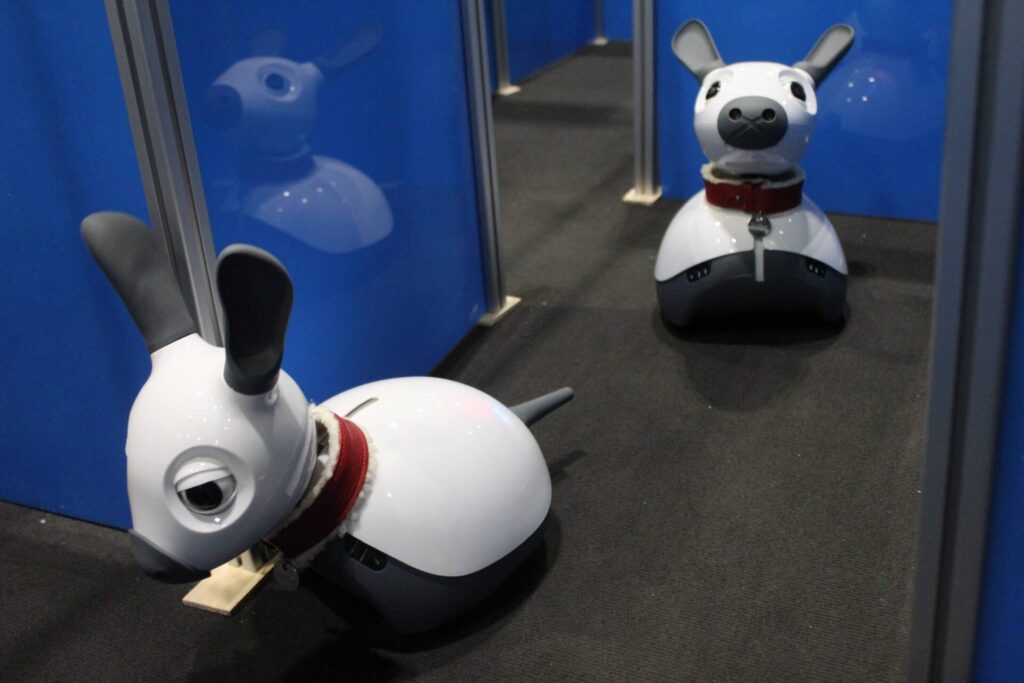
It took a lot of work from the entire itDf team and other partners to deliver such a multi-faceted, hands-on exhibit at such a big event as New Scientist Live. The stand organisation was led by the team from Sheffield. Tony Prescott and Michael Szollosy, who had exhibited as Sheffield Robotics at New Scientist Live in 2017 and have a tremendous amount of experience delivering engaging events around robotics across the UK and Europe.
The Prototyping the Imagination website and activities were led by Chrissie Stimson, who is also at Sheffield. This is a key part of her research on exploring the symbiotic relationship between representations of futuristic technologies in popular culture and real-life technological advancements. Look for more news about Chrissie’s research and our new website (scifi-stories.org) coming here soon.
The collaging activity was designed by itDf’s Dundee-based team, specifically Katie Brown, Fin Tams-Gray and Graham Pullin, who have done previous work encouraging discussion and reflection on augmentative and alternative communication (AAC). Fin was on the itDf stand at NSL and encouraged visitors to create narratives about possible future forms of AAC using images we supplied, putting themselves into a scene, communicating with specific people and imagining how they might want to express themselves and how. You can see some examples of the work that NSL visitors did below.

The other robot activities on the stand were designed to start conversations with visitors, young and old alike. When interacting with the Miro robots in the ‘petting area’, for example, we ask visitors to think about how they imagine engaging with robots in the future, whether they can see themselves forming emotional attachments to robots, and more specifically, how robots in the future could be used in care. Similarly, with the maze, we could ask visitors how they see themselves working with robots in the future, and how robots might be able to help them in certain tasks. Such conversations, like the fiction website and the collaging activity, spark imaginations and help NSL visitors think about future intersections between technology, disability and the human.
The itDf stand was also staffed by our colleagues and friends from Sheffield Robotics, the Department of Computer Science at the University of Sheffield, Leeds Libraries, and the ERISE project. They helped in particular with the Robotics Maze and Miro petting area. We want to say a special ‘Thank you!’ to Alex, Aung, Liam, Marina, Rob, and Ruby.
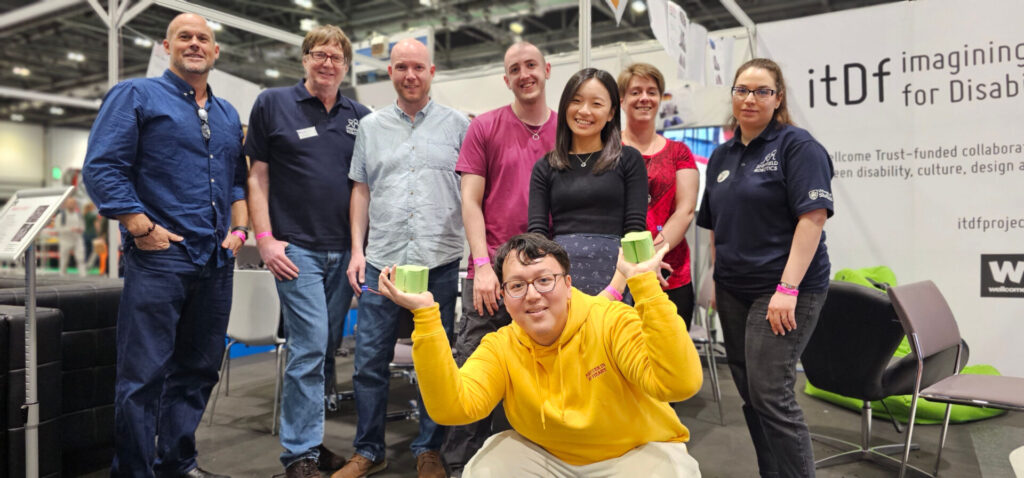
Our itDf project is passionate about communicating what we do to as wide an audience as possible; If you are interested in itDf bringing a version of our public engagement offering to your event, please contact Michael at m.szollosy@sheffield.ac.uk
